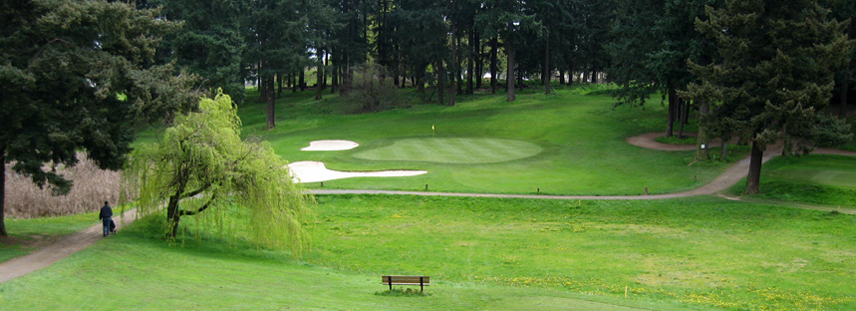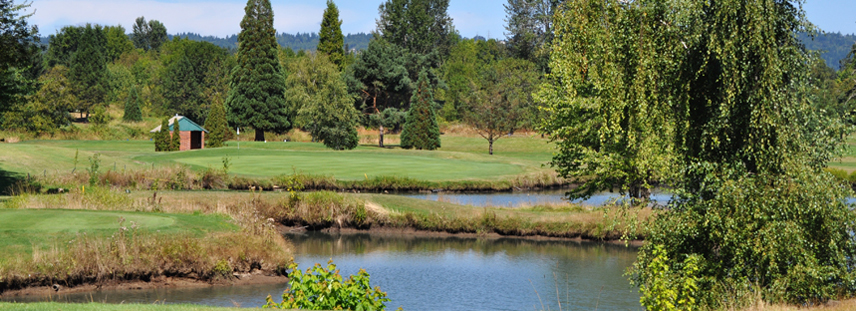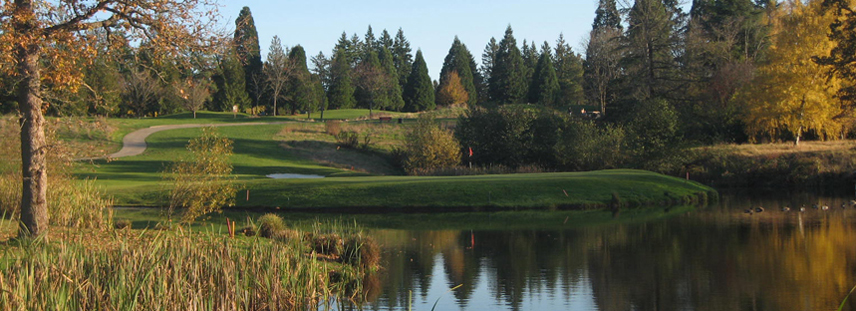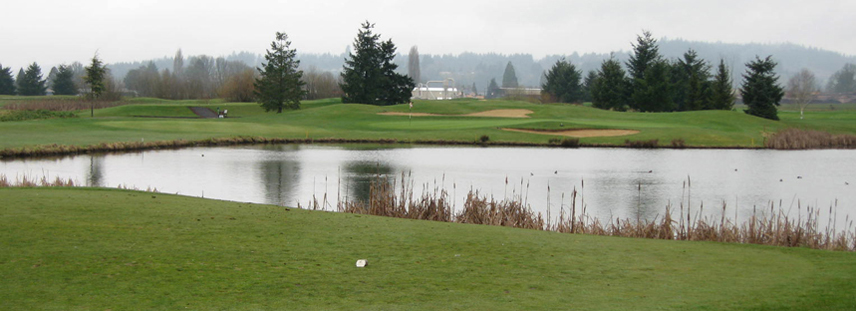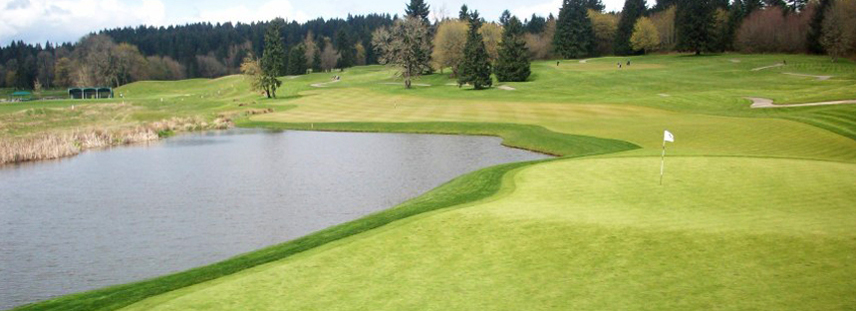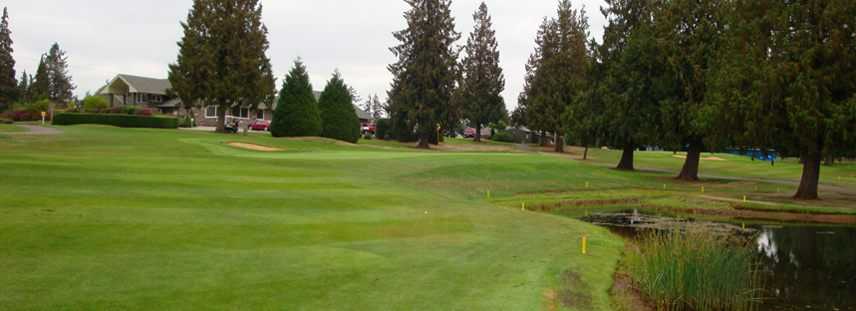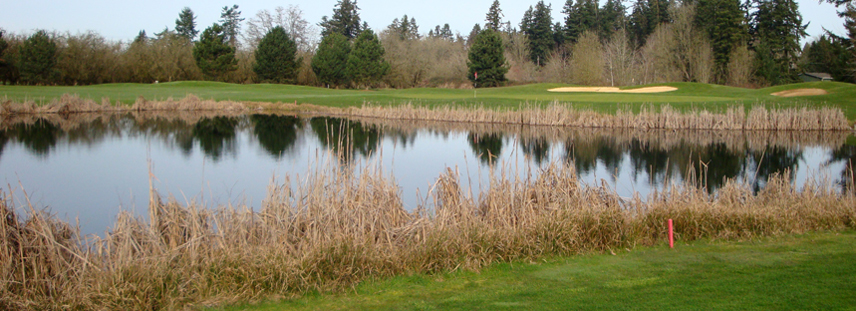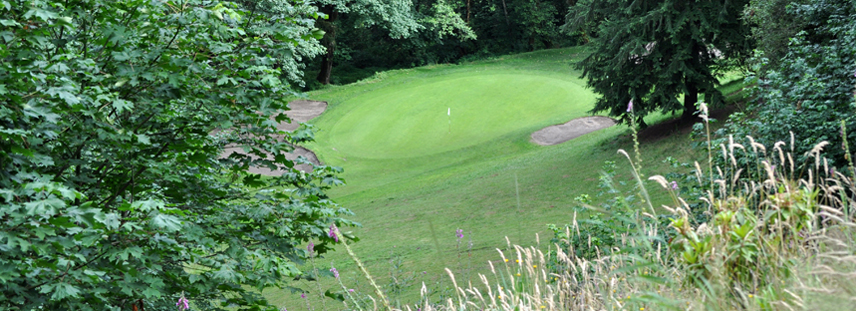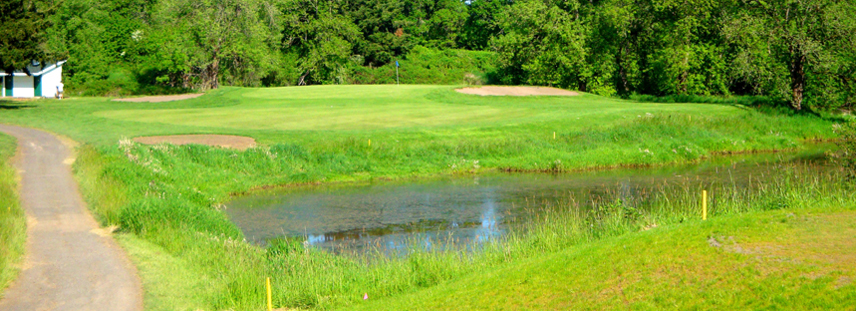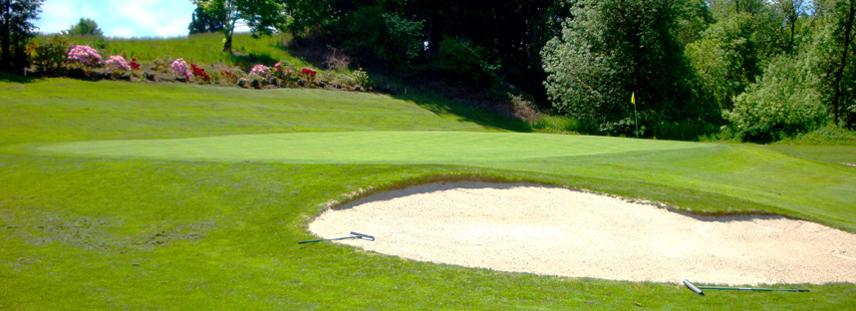Pumpkin Ridge Golf Club, in North Plains, OR, is a signature course for world class golf in the Northwest. Pumpkin Ridge is comprised of two championship style 18 hole courses; Witch Hollow and Ghost Creek. Witch Hollow is for members only and is a well known course on a national level. In 1996, Tiger Woods won his third and final US Amateur championship here, prior to turning pro and signing with Nike in nearby Beaverton. In 1997 & 2003, Witch Hollow hosted the Women’s US Open. Ghost Creek, Pumpkin Ridge’s public side, rivals its exclusive counterpart in most areas. There is no discernible difference in the level of quality and beauty between the two courses, only the perceived allure of Witch Hollow’s storied past. Ghost Creek is carved into the same forested and wetland setting with the same vision and level of care. Every aspect of the course plays to the tune of the surrounding beauty and is wonderfully laid out amid its natural elements.
Pumpkin Ridge Golf Club’s Ghost Creek course provides a full array of challenges and fantastic scenery. Don’t be fooled by the wide open layout of the 1st and 10th holes, visible from the clubhouse. They may be a friendly invitation to swing aggressive, but from then on, nature brings on more restrictions. As you head toward the forested areas of Ghost Creek, fairways narrow, tree lines impede and wetlands are plentiful. If you land the fairways you will enjoy hitting off their extremely short cut. Beyond that, the rough is thick and often plotted with deep set bunkers or various forms of water hazards. Rolling terrain, large knolls and some fairway-side embankments can create awkward lies, which are welcomed versus penalty drops out of protected wetlands. The greens at Pumpkin Ridge are immaculate. They are intricately engineered and heavily defended. Short of the putting surfaces themselves lies the challenge of avoiding the bunkers, creeks, ponds, and unleveled surrounding terrain next to them. Once you’re past these neighboring nuances, your focus must turn toward their lightning fast speeds and sharp slopes with an undivided attentiveness. From tee to green, Ghost Creek is very tough, but playing here is a true privilege that not even the worst of rounds can interfere with.
Playing Ghost Creek at Pumpkin Ridge
The first hole begins the challenging front nine at Pumpkin Ridge. A straightaway and particularly open Par 4, the first hole may be the most scorable on the front. Hole #2 is one of the tightest holes on the golf course. A tee shot to the right half of the fairway is ideal, since a large tree may block approach shots from the left. The 3rd Hole at Pumpkin Ridge is a long Par 3 with plenty of trouble surrounding the green, and requires a lengthy carry to a two tiered green. The next hole #1 Handicap and well earned. The fourth hole at Ghost Creek is long Par 5 and the definition of a three shot hole. From tee box to green, everything feeds to the left with three unique tiers moving right to left. The green also includes three tiers on a long green, meaning you may be looking at a very long putt if you don’t stick it close. Par is a great score on this hole.
Another long Par 3 awaits you on #5 before reaching #6, the shortest Par 4 on the front nine. Many players choose to leave the driver in the bag, opting for a safer shot to the widest part of the fairway. Your approach into the smallest green on the course can be tricky as the entry into this green is miniscule. Hole #7 is one of the most instantly recognizable holes on the golf course, featuring grass mounds in the long fairway bunkers lining the left side of the fairway. Tee shots missed right can make this a three shot hole. The 8th Hole is a downhill Par 5 reachable in two, although the slender green puts a premium on accuracy. An extremely challenging hole finishes the front nine at Ghost Creek. A small creek runs along the right hand side of the fairway before cutting the hole in half. Only the biggest hitters will be able to clear the stream, leaving the rest of us with a long iron coming in. The green is fairly large with a few bends and turns, but the main challenge on this hole is getting there in one piece.
The back side of Ghost Creek begins with a Par 5 reachable in two for heavy hitters. Tall grass awaits stray balls to the left hand side, but overall the hole is fairly wide open. Hole 11 is the first of three Par 3′s on the back nine and is a straightaway mid-iron hole. Put your tee shot on the green and par should be in your reach. The location of the tee box at 12 can dictate your play on this severe dogleg right. A shortcut over the trees on the left hand side is possible, but can leave you with no look at a second shot if you don’t make it. Hole #13 is a straight yet uphill Par 4. Players will generally have a short iron into this green, but don’t miss long. The longest Par 3 on the course awaits next and plays longer than it appears, particularly into a westerly wind. Many players will need a fairway wood to reach the green.
The longest Par 3 is followed by the longest Par 5 on the course (from all tee boxes but Black). Requires three nice shots to get to the green in one place. Hole #16 is he shortest hole on the course, but trouble surrounds the green. Left is bad. Right is trouble. Long isn’t better. The only place you can leave the ball off the green is short right. Hole #17 follows and is the shortest Par 4 on the course. Many have been penalized for attempting to drive the green. The closing hole at Pumpkin Ridge is as difficult a hole you will encounter on the grounds. A wide open tee shot allows you to go after your tee shot, but shots left will be knocked down and extend the hole. A long approach awaits most players with a large lake on the right. The safe play is left, while the scoring play is over the water. A large two-tiered green offers a nice challenge to end your day.
